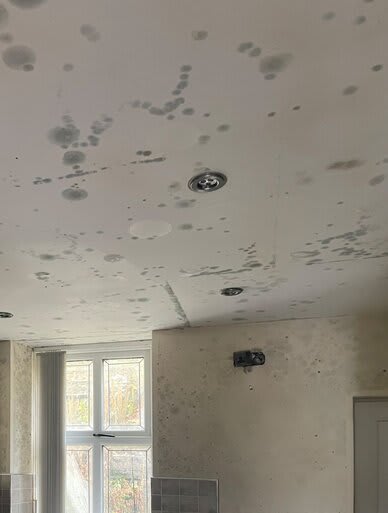Mould in rented properties is something tenants, landlords and lettings agents know about all too well. And with recent soaring utility bills leaving more tenants unable to warm up their homes, mould is a bigger problem than ever. Imminent changes to the law*, following the tragic death of Awaab Ishak, mean that landlords will soon face new responsibilities to provide safe housing.
From being linked to the medical phenomenon ‘Sick Building Syndrome’, to causing severe respiratory distress, mould exposure is a serious problem that should never be ignored.
For a long time, landlords and tenants pushed the responsibility of fixing damp complaints back to the other party. With no clear guidelines in law, many houses across the country became unfit to live in. But since the death of Awaab Ishak, a 2-year-old child who died as a direct cause of mould exposure in social housing, a new law has been proposed in England and Wales.
Landlords will soon have a legal responsibility to determine the cause of mould in their property, and to put measures in place to fix it within a strict time limit, if the onus falls on them. This new law will be integral to tenancy agreements, so the tenant can hold the landlord legally responsible if they fail to act in a timely manner.
Where landlords and tenants stand legally…
As mould can manifest from multiple causes, confusion often arises over which party is liable. In layman’s terms:
- Mould that comes from ‘rising damp’ (water that rises up through the bricks and mortar), is the responsibility of the landlord, and dampproof insulating materials must be used to prevent it.
- ‘Penetrating damp’ that works its way in through broken roof tiles, faulty plumbing or other structural issues is also the responsibility of the landlord.
- Condensational mould caused by structural issues (lack of ventilation, insulation or faulty heating systems) falls upon the landlord to fix
- However, the landlord is exempt if the condensation is caused by the tenant’s lifestyle habits, which include showering or cooking without opening any windows, drying clothes indoors, or insufficiently heating the home.
What’s the answer?
We at Action Insurance Repair see increasing cases of mould caused by the latter and while the cost of living crisis hangs over us all, this problem is here to stay.
Although part of a much wider, societal problem with no quick fix, tenants and landlords need to come together to know their rights and navigate the problem in a communicative and compassionate way - for mutual benefit. No one wants to live in a mouldy environment and if untreated, mould can worsen to affect the fabric of the building.
Tip: Are you a lettings agent getting complaints from tenants about mould?
Arrange an investigative inspection and notify both the landlord and tenant of the imminent changes to the law. If the mould is caused by the tenant’s lifestyle, suggest ways they can adjust their living habits to help eliminate the problem
*At the time of going to print

